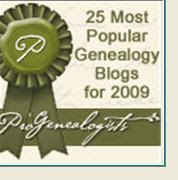The permanent exhibit includes the history from the time Jews reached what is contemporary Germany as traders with the Romans. The first proof is a decree from 321 CE issued by Emperor Constantine to the authorities in Cologne.
The medieval world section details the fact that three most important Middle Age communities were Speyer, Worms and Mainz, known as the "shum" (Hebrew for garlic) communities, an acronym taken from the first letters of the Hebrew town names.
Glikl bas Juda Leib (Glukl of Hameln, 1646-1724) has her own section. She was a trader, businesswomen and mother and wrote a wonderful description of her life and times, considered the oldest preserved autobiography of a Jewish woman. These memoirs were translated into German by Bertha Pappenheim (1859-1936).
There is a section on the rural Jews of southern and western Germany after they were expelled from large towns in the 15th-16th centuries. They were traders and mediators between city and rural areas; some became "court Jews."
Another section is on the poor scholar from Dessau - Moses Mendelssohn - who fought for tolerance at a time when there were no civil rights for Jews.
Other sections view religious life, such as kashruth (dietary laws) and family tradition.
In 1871, Jews in Germany became citizens with full rights, and other sections go on to cover modern forms of Judaism from the Enlightenment, into modernism and urban life, modern life's Zionism and anti-Semitism, World War I and the Holocaust.
After the end of the war around 250,000 Jews waited in camps for displaced persons in Germany to emigrate to overseas. This number included nearly 50,000 survivors from concentration camps and the more than 1,500 Berlin Jews who had managed to survive in hiding. After a transitional period to the founding of the Federal Republic of Germany, the German Democratic Republic, and the state of Israel, around 20,000 Jews settled in West Germany and about 600 in East Germany. Today there are more than 105,000 members of Jewish communities in the Federal Republic of Germany, approximately 96,000 of whom are recent arrivals, immigrants from the former Soviet Union.There is an exhibit focusing on Jewish childhood and youth, since 1945, in Germany, Austria, and Switzerland, in which 18 storytellers have opened their photo albums. Each selected an image of an experience; these date from 1947-1990s, illustrating their maturing as a child of survivors, fugitives and migrants. Stories can be listened to in German or English.
Still another section is a multimedia portrait gallery of Jewish court servants - in velvet robes, curly wigs and pointed bonnets - during the 18th century in such cities as Berlin and Stuttgart as in Wolfenbüttel and Pfalz-Zweibrücken. They served the rulers, financing the building of palaces, equipping armies, and supplying jewels. A court Jew could amass a fortune but could also wind up in prison. There is even a computer game in which visitors can examine their own skills.
The museum's family collections contain valuable information for historians and genealogists, such as the following:.
Gerda Maison took care of a small leather folder given to her by her aunt, Frieda Neuber (1869-1942), shortly before her deportation from Berlin to Theresienstadt. She kept it for 65 years and has now given it to the Jewish Museum Berlin.Take the time to explore the site and view the illustrated documents, paintings and artifacts.
The folder contains letters and telegrams from and to Frieda over a period of three years, primarily correspondence between herself and Bob Kunzig, a young American law student. They had got to know one another on visits to each other's countries and Frieda Neuber's three-year stay in Philadelphia. With money he inherited from his grandmother who died in 1941, Bob tried to enable his "Aunt Frieda" to emigrate to the USA. The plan failed. On 6 July 1942, Frieda Neuber was deported to Theresienstadt where she was killed.
Friederike Maison and her three siblings Clara, Hermann, and Robert were christened at the St. Jacobi Protestant Church in Berlin on 12 October 1882. Over 50 years later, the four siblings were classified by the "Nuremberg Laws" as "Volljuden" (full-blood Jews). Since their non-Jewish spouses with the exception of the wife of Robert Maison (the father of the donator) were no longer alive, they were completely at the mercy of Nazi persecutory measures.





































No comments:
Post a Comment